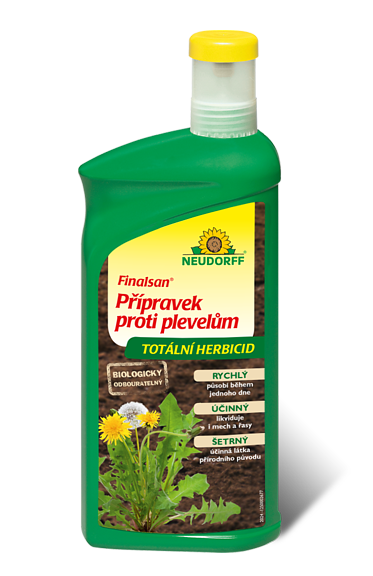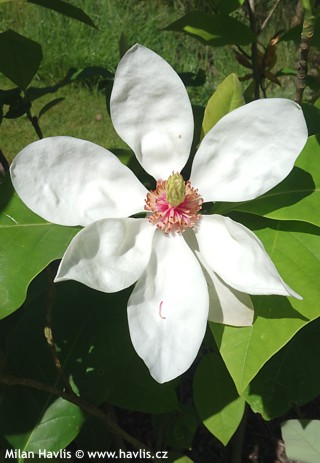Magnolia x thompsoniana Thompson magnolia
Magnolia
Thompson magnolia was found in 1808 among many seedlings of m. virginiana by Mr. Thompson from a nursery in Mile End, London, UK. One plant had distinctly larger leaves and flowers, so he assumed it to be a natural mutation which he named m. virginiana var. major. He did not take into account possible influence of m. tripetala growing nearby. That influence was discovered only 24 years later when naturalist and artist Jean Henri Jaume Saint-Hilaire examined the plant and noticed characteristics of both the species in 1832. He declared it a hybrid, in fact the very first (natural) magnolia hybrid in history, yet 12 years before the famous m. x soulangeana (of garden origin).
Thompson magnolia is quite rare in cultivation today as it was when it was introduced. At that time winters all around Europe used to be harsh and this magnolia surprisingly proved less hardy than either of its parents. It would cope with some -24 °C but lower temperatures often killed its immature top growth including the flower buds. A couple of centuries have had to pass to restore this beauty to cultivation, confirming that current climate is suitable for growing it freely in zones 6 and higher, possibly 5b with protection.
Thompson magnolia boasts large, creamy white, very fragrant flowers which come out from June until July on a fully leafed out plant. The flowers are up to 15 cm across and the fragrance is deep and sweet. Deciduous leaves are broadly ovate to obovate, 15-25 cm long, fresh green above and glaucous beneath. They are rated as semi-evergreen but in C.E. climate they are commonly fully deciduous. It grows fast into an upright, later somewhat spreading and uneven habit with green new twigs. Plants are 3-4 m tall in gardens but can be twice as big in free land.
Magnolias are not supposed to be pruned. You can prune old shrubs if ill, or trim them to shape or to reduce size, or make an elementary cut to young plants of unsightly or unhealthy appearance. Do this as soon as possible after flowering to secure setting of flower buds for the following year. Be aware that each magnolia can respond differently to pruning.
Deciduous magnolias are quite easy plants. All they need is light, well-drained, acidic soil with equal moisture throughout the year. Once established they can do with occasional drought but will not look as nice as the ones with regular watering. Just pay attention to how you plant your magnolia. First, find it a spot where it will live forever and ever. It does not like transplanting. And as it makes shallow roots reaching well over its spread, stay away from disturbing the roots by digging or messing about around it. Just cover the soil with bark mulch and do not plant anything else near it after say the second year after planting onwards. You could damage the important top roots that absorb maximum moisture and nutrients from the soil. Also avoid planting magnolia too deep. Thus, you could be digging it a grave. Hardy to min. -24 °C (USDA zone 6).
Last update 10-12-2020

1 683 Kè

1 683 Kè
Goods are shipped all over Europe. For Russia and U.K. and for further details please read about SHIPPING OPTIONS HERE.
Are you interested in a serious discount for orders NOV-FEB? Check your options here.
THE PRICES INCLUDE VAT of 15%. For quick conversion you can use 1 CZK = approx. 0.04 EUR
- STANDARD QUALITY - Plants of this group are 1st class quality with number of branches and overall density adequate to their size and age, considering they were container grown.
- DE LUXE QUALITY - This label guarantees a luxurious quality of manually selected plants that, compared to their height and age, are exceptionally dense and beautiful.
- EXTRA - These plants are usually mature and bigger specimens with exceptional overall appearance.
- STANDARD (as described in the plant form) means a tree with a trunk of 190-210 cm and a crown at the top, unless specified differently. The commercial size for trees is their girth measured in the height of 1m from ground.
- HOBBY - These plants are of the same quality as our standard-quality plants but younger and therefore cheaper.
- SHRUB - a woody plant with branches growing bushy from the ground level.
- HALF-STANDARD or MINI-STANDARD - a small tree with shorter trunk, its size is usually specified.
- FEATHERED - These are trees with branches growing already from the base of the trunk and up along the stem.
- GRASSES and PERENNIALS - Sizes given usually read the diameter of the pot or the clump, as specified.








































